What makes a great action scene? Why is something like, say, Man of Steel’s climactic battle an exercise in tedium when something like the church shootout from John Woo’s The Killer lives on as an enduring example of quality filmic action? How can you even compare such drastically different action scenes? After all, is it really fair to say that a superpowered hand to hand fight is the same as a shootout? And the answer to that is: yes, of course it is. Not just because I say so, but because all action scenes are built on the same core foundations. If they satisfy all these conditions, chances are it’s a really good action scene:
- Are they physically believable?
- Do they establish geography?
- Do they express character?
- Do they escalate tension?
I firmly believe that the best action sequences fulfill all four criteria, everything from the kitchen fight from The Raid 2 to the bike chase from this year’s Incredibles 2. But today I want to talk about one of the clearest examples of quality action filmmaking across all four paradigms: the tank sequence from Indiana Jones and the Last Crusade. For nine minutes, Steven Spielberg has the audience in the palm of his hands and provides a perfect celebration, and distillation, of what action cinema can be. Take the time to watch it again; it will go by quicker than you think:
IS IT PHYSICALLY BELIEVABLE?
Physical believability is of the utmost importance to an action scene because action is almost purely physical. If the audience can’t believe in the action in front of them, it loses its defining characteristic. The infamous “burly brawl” scene from The Matrix Reloaded is notorious for its heavy usage of digital doubles, diminishing any and all burliness from its brawl by replacing its physical actors with weightless CG dummies. There’s no investment in an action if you don’t believe someone can get hurt, and digital doubles are one of the easiest ways to ruin a fight scene (an issue I have with just about every Marvel movie). That’s not to say you can’t use CGI in a fight scene, but a live action movie removes all danger when an obvious digital double that doesn’t obey the same laws of physics as the character they’re substituting is put in harm’s way. Even animated movies are not exempt from making physically consistent, satisfying, and impactful action.
So can you believe in the physicality of the Last Crusade scene? You tell me:
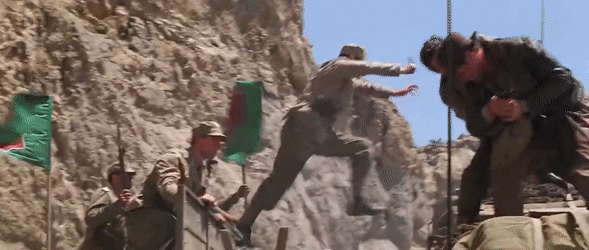
That sure looks like a bunch of real human beings slugging it out on top of moving vehicles. Though obviously filled with its own movie-making trickery, there’s a dedication to real stunt work and impressive choreography throughout the sequence. Rather than a confused melee of performers all doing their own thing, each movement is perfectly timed with the camera and all the other moving pieces.
Every action has a satisfying reaction, whether it’s the tank shells exploding throughout the fight and sending up great plumes of debris, fisticuffs that send the characters flying with every satisfyingly chunky stock sound effect, or the Luger that blows a hole clean through a line of Nazis. All of this visceral action is largely captured within one frame as well, adding to both the danger and physicality of each impact as the actions, combatants, and reactions are all visibly sharing the same space and connecting with one another.

DOES IT ESTABLISH GEOGRAPHY?
Geography is crucial for an action scene to work, particularly in chase sequences and shootouts where there is distance between the various players and their spatial relativity. It is critical for the tension of the scene to be felt. A big reason people tend to complain about tightly shot “shaky-cam” and rapid editing in action sequences is not just that it obscures the physicality of the action, but because it simply makes it difficult to understand where it’s taking place in space. We’ve already established that Spielberg makes careful use of the wide shot to frequently show the audience all the players in the scene, but because this action sequence juggles so many characters it’s a bit more complicated than that. Not only does the action occur between Indy on horseback and the tank, but between his father Henry Sr. and friend Marcus Brody, and the Nazis inside the tank. Spielberg’s choice of shots to illustrate the geography of the inner workings of the metallic behemoth are quite clever. The first shot of the inside of the tank is from outside the front window looking in, which serves to establish the cardinality of the positions of those inside, and their relation to the exterior that we spend most of our time watching. Shortly after, in two fluid camera moves, the camera tracks an ejected shell from the gunners position and then pans over to the cowering Henry and Marcus. By showing this in one unbroken shot rather than simply cutting to them, the viewers can easily judge where these critical players are while further reinforcing the drama of the destructive capability of the tank.
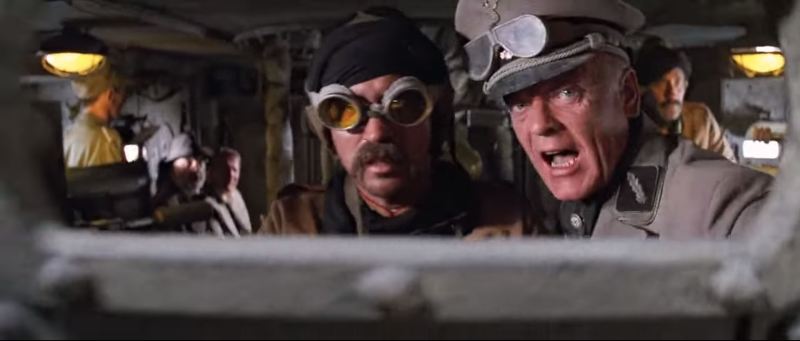
Point of view shots are also employed throughout the scene as a clever way of both crafting suspense (such as when Indy is locked within the sights of the gun), and of placing the viewer within to character’s sight lines so they can further judge the consequences of the geography of the scene. A POV shot is used at a critical moment in the scene to illustrate the imminence of the tank rolling off of the edge of the cliff. Then, after the criticality of the situation is imparted with the POV shot, Spielberg uses repeated cuts back to a wide omniscient shot in order to show the viewer an accurate measure of exactly how much time is left on this most climactic ticking clock.
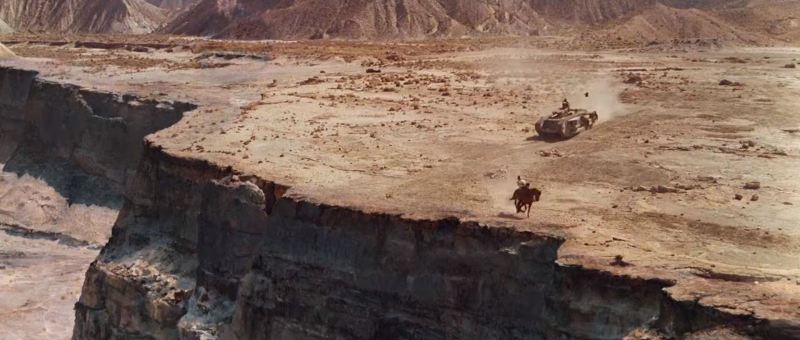
If the action itself is the brushstrokes then the geography of the scene is its canvas, and with this sequence Spielberg makes sure to use a very large canvas indeed. If he hadn’t, the scene wouldn’t work at all, as the audience would never know when to feel tense due to an oncoming cliff, or the rotating of the tank’s guns.
DOES IT EXPRESS CHARACTER?
Some folks like to delineate between action and drama, as if any time characters stop talking and start punching then their development is put on hold. And for poor action movies that’s absolutely the case. Any time you find yourself bored during an otherwise technically proficient action scene, it might be because it’s failing to express character, and as a result feels detached from the narrative of the film. I loved Blade Runner 2049 for example, but occasionally the action beats felt like they were there simply because they were expected for a genre film to have them, and not because they served the story. Mad Max: Fury Road, on the other hand, is almost entirely action, so to develop its characters and narrative it had to find a way to express character through action.
How does a character move? What are their eyes telling us? How are they reacting and coordinating with the other characters? How do they throw a punch? How do they take one? All of these things tell the audience crucial information about who a character is and what’s going on with them at that point in the story without having to use dialogue at all. That’s what made silent film performers like Buster Keaton and Harold Lloyd such compelling characters; because their physical performance conveyed the entire story when the medium couldn’t rely on spoken words to do it for them; it was pure visual storytelling. Action filmmaking is the descendant of silent film in its visual expression, and Harrison Ford’s performance as Indiana Jones in this scene can be traced right back to those performers with their charismatic blend of death defying stunts and exaggerated physical humor.
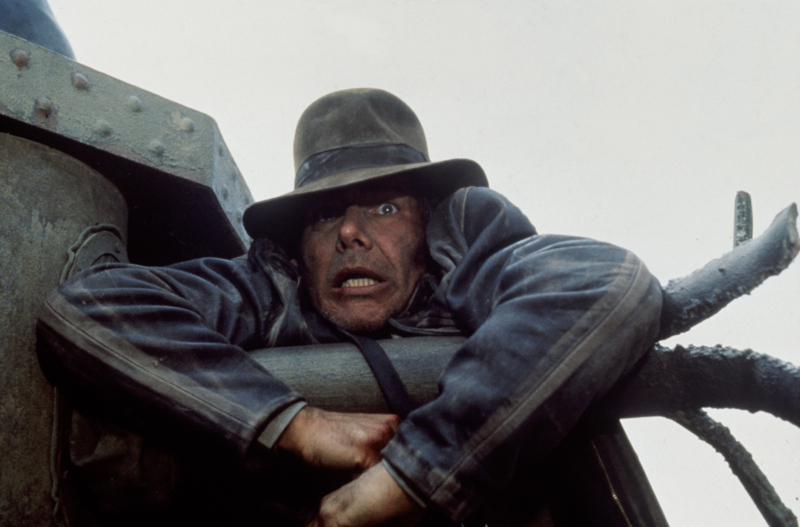
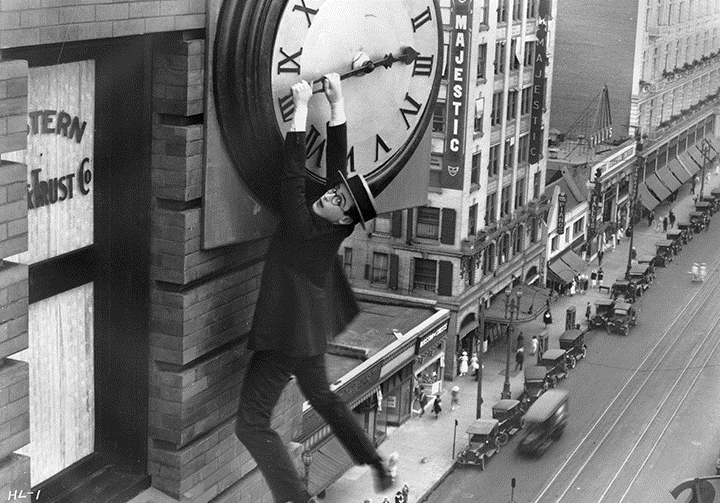
Play the scene again and watch it without sound this time. Pay attention to the characters and how they navigate the scene and what that tells about them. Indy is capable and self-assured in how he throws himself into brazen and death-defying stunts, but his face frequently tells a different story, often expressing surprise or amusement that what he’s doing is somehow working. Marcus Brody is broadly depicted as the physically ineffectual intellectual in the scene and his biggest physical task is to struggle with an unconscious soldier on top of him. Every single major character of the scene, and even some of the minor goons (look at the shit-eating grin of the smug periscope operator), have developed personalities through how they act and are incorporated in the scene. Someone who is entirely unfamiliar with Indiana Jones could watch this sequence in isolation and immediately understand who these people are solely based on their actions.
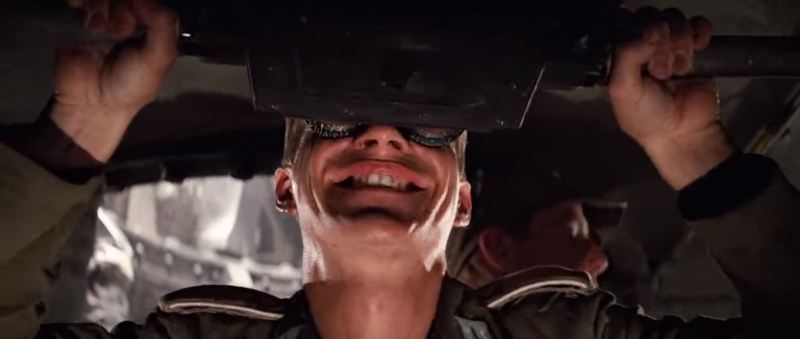
DOES IT ESCALATE TENSION?
Another failing of many an action film is that they mistakenly think that the more intense the action is, the more intense the scene itself will be. As a result, this blunt and inarticulate approach frequently leads to a numbing effect where the viewers’ eyes glaze over when a sequence devolves into a redundant series of blows. Man of Steel is a perfect example of this; there are only so many skyscrapers a character can be tossed through before it loses its impact. At a certain point, we’ve seen enough of what the scene has to offer. Action, like a piece of music, needs to be paced properly with ebbs and flows and a steady progression in the stakes of the scene before it results in a cathartic climax.
Notice how the sequence from The Last Crusade is not just nine minutes of Indy on horseback playing tag with the tank until it rolls off a cliff. That would be dull and unnecessary. Instead, count how many dramatic mini-climaxes and tension relievers there are, and see how it alters the dynamic of the action after every tension release only to have the next mini-climax be even more fraught than the one before it.
- Indy and his horse are close to being blown away by the tank. The tension is released after he destroys the tanks gun by jamming it with a rock.
- The tension is escalated when Indy has to contend with a whole squad of Nazis on the back of the tank. The tension is released when he shoots through them with the Luger.
- The tension is escalated when Vogel, the SS Colonel and commander of the tank, starts choking Indy with a chain. The tension is released when his father uses the tank to blow up a truck of reinforcements, and the shockwaves allows him to escape…
- … Only to escalate the tension further by having him dangle from the barrel of the tank.
The tension and release only gets more perilous as the emotional stakes are upped when Indy must save his father while he’s being attacked and there are many minor tension increases within each of those mini-climaxes.
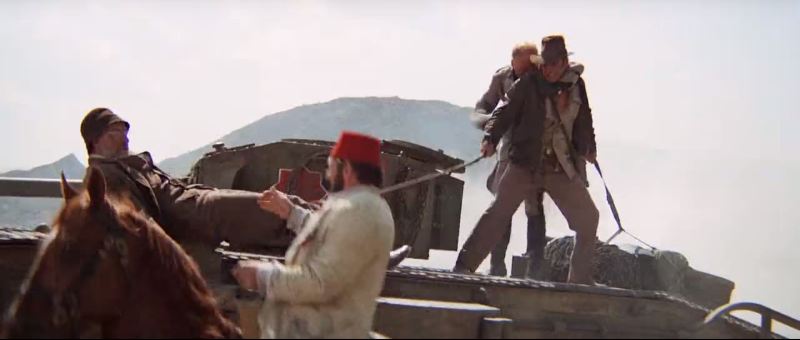
The end result is an incredibly dynamic action scene that never fails to generate suspense and never disengages the viewer by constantly providing cathartic tension releases throughout and shifting the action into ever more precarious situations. The scene saves the best for last, giving its villain the protracted death by fall that he deserves, and extending the tension of Indy’s fate until the last possible moment.
By carefully measuring and ramping up the action, the emotional catharsis can be its greatest, because the sequence has invested you on a narrative level — just as well as any “drama” could. And that’s because action, like all good cinema, is drama; and drama (as someone who went to film school and made his fair share of bad dramas) is really hard to do successfully. It’s an involved process that requires balancing every facet of production, narrative, and audience expectation, and you can count yourself lucky if what you end up with is even just okay. The fact that the tank sequence from The Last Crusade is not just okay, but actually perfect, is just shy of a miracle. The next time you find yourself gripping your armrest through an action scene, do yourself a favor and play it through again; watch closely and ask yourself: “What makes this a good action scene?”
